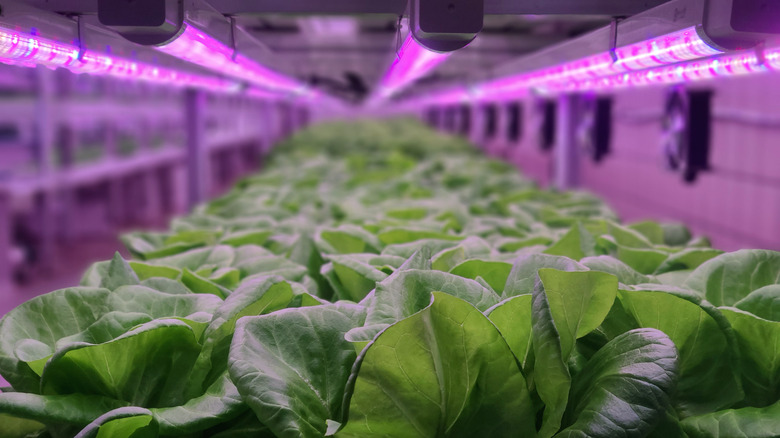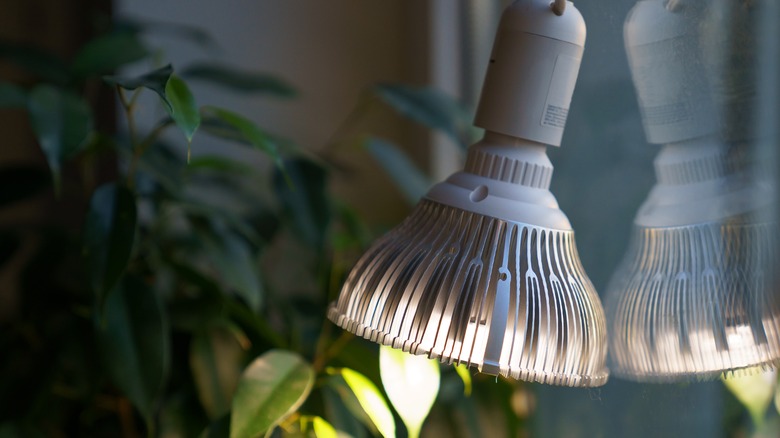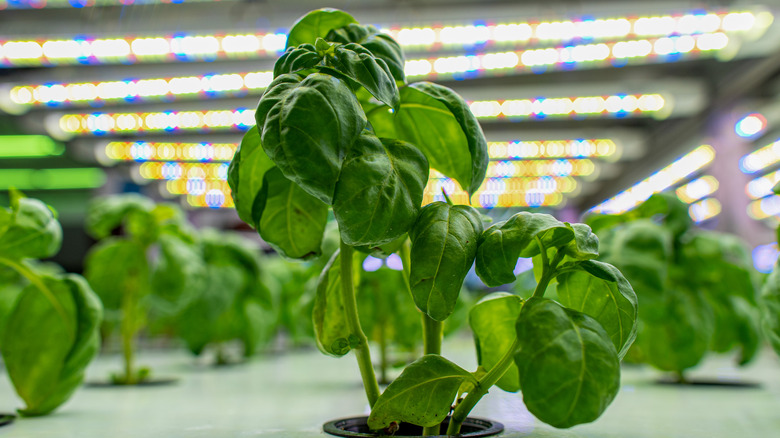Here's Why You Should Be Using Grow Lights In Your Garden
Ah, the joys of gardening — the smell of freshly tilled soil, the thrill of witnessing tiny seedlings flourish, and a timeless, soul-nourishing pastime for many. But let's be honest: not all have the luxury of a garden basking in sunlight all year round. Enter grow lights. Whether you live in a remote, sun-deprived locale or are attempting to nurture houseplants amid a dreary winter, these luminous marvels can be a game changer. They are expertly crafted to replicate the sun's rays, delivering consistent light energy plants need to grow big and strong. The benefits of grow lights span from faster growth to increased yields. And let's not overlook the prospect of growing exotic species that would otherwise perish in less-than-ideal weather.
Types of grow lights are deeply varied. From energy-efficient and long-lasting LED lights and the classic fluorescent tubes to the potent HID plant lights, there's something for your gardening needs and budget. But you may wonder, "How is light from a grow bulb different from sunlight?". Unlike sunlight's full-spectrum fiesta, grow lights can be tailored to emit specific wavelengths most beneficial for plants. However, plant lighting demands vigilance over the positioning of the light sources, duration of exposure, and light color to ensure optimal growth for your leafy companions. Positioning your grow lights too close or far away from your plants could stunt growth or turn your once-lush paradise into a wilted wasteland. Conversely, incorrect exposure times can lead to compromised growth or excessive energy consumption.
Benefits of using grow lights in your garden
Plant lights empower sunlight-starved plants to sprout faster and sturdier, which translates into increased harvest cycles. It's like bestowing your plants with a superpower that allows them to flourish into their best versions. Next comes the magic of a broad spectrum and diverse light intensity. It's like a limitless buffet catering to different plant types and growth stages, from tiny seedlings to blooming beauties. The cherry on top is that you can fine-tune the qualities to satisfy your diverse plant family, much like a personal chef whipping up the ideal light dish for each one. With a targeted light spectrum, you can expect vigorous growth, production of more flowers, and higher yields.
Employing grow lights in a controlled environment helps limit pests and diseases, reducing the need for chemicals. That's considering outdoor, unprotected gardens are often more susceptible to pest infestations and disease outbreaks, which can devastate crops besides demanding regular application of potentially harmful pesticides and fungicides. With grow lights, you can build a sanctuary for your plants, safe from the grasp of annoying insects and nasty diseases. Plus, you can count on some light sources to offer the appropriate warmth without scorching your plants — provided you distance them safely.
How to use grow lights for indoor and outdoor plants
Start with choosing the right grow light for your plants. Fluorescent lights are energy-efficient with a decent light spectrum but can be pricey. Incandescent plant growing bulbs are budget-friendly but less efficient and emit more heat. LEDs are the real MVPs, thanks to their ultra-low heat output, ideal light spectrum, high energy efficiency, and longer lifespan. Then there are HID lights, a commercial specialty acclaimed for its high light output.
Regarding what color of grow light is best for indoor plants, red light is perfect for germination, flowering, and budding, while the violet-blue spectrum aids photosynthesis and overall growth. Full spectrum led grow lights, the Swiss Army Knife of plant lighting, cater to all growth stages. Curious about when to turn on grow lights for indoor plants? Ideally, exposure should start immediately after germination. Garden flowers fare best with a minimum illumination of 14 hours and no less than 8 hours of darkness daily. Installing your plant grow light bulb above the foliage helps mimic the effect of direct sunlight. Fluorescent plant lights should stay 3 to 12 inches above the foliage. And because HIDs emit more heat, suspend them between 12 and 31 inches above the plants. By paying close attention to these particulars, you'll be well en route to creating a flourishing garden that defies the limitations of natural sunlight.


